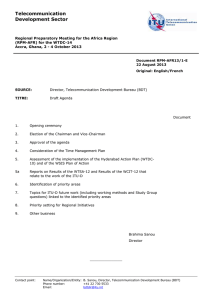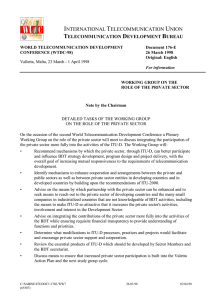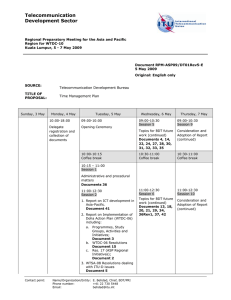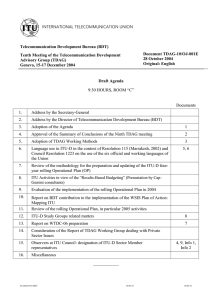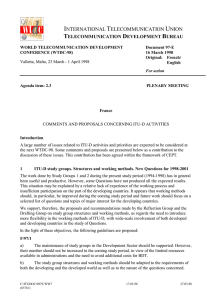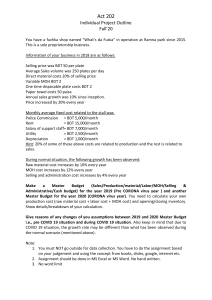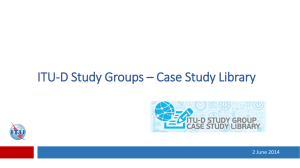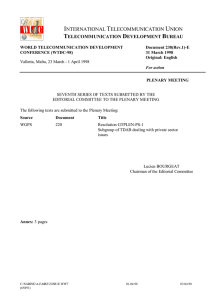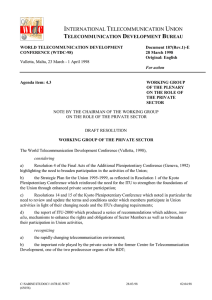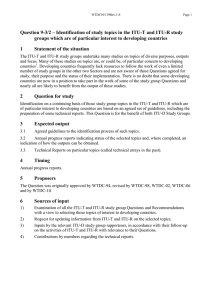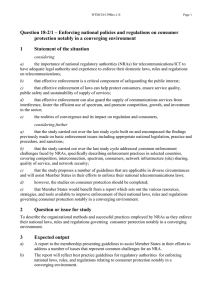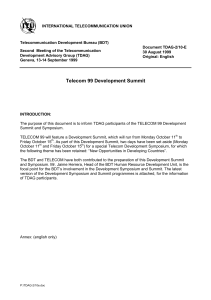English
advertisement
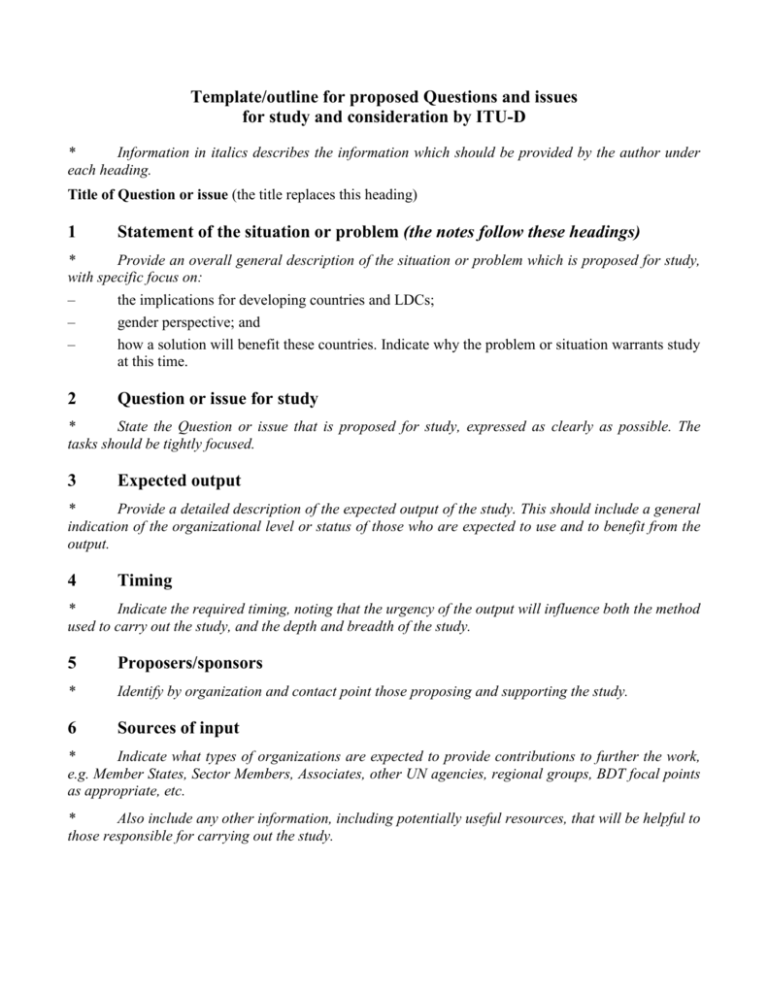
Template/outline for proposed Questions and issues for study and consideration by ITU-D * Information in italics describes the information which should be provided by the author under each heading. Title of Question or issue (the title replaces this heading) 1 Statement of the situation or problem (the notes follow these headings) * Provide an overall general description of the situation or problem which is proposed for study, with specific focus on: – the implications for developing countries and LDCs; – gender perspective; and – how a solution will benefit these countries. Indicate why the problem or situation warrants study at this time. 2 Question or issue for study * State the Question or issue that is proposed for study, expressed as clearly as possible. The tasks should be tightly focused. 3 Expected output * Provide a detailed description of the expected output of the study. This should include a general indication of the organizational level or status of those who are expected to use and to benefit from the output. 4 Timing * Indicate the required timing, noting that the urgency of the output will influence both the method used to carry out the study, and the depth and breadth of the study. 5 Proposers/sponsors * Identify by organization and contact point those proposing and supporting the study. 6 Sources of input * Indicate what types of organizations are expected to provide contributions to further the work, e.g. Member States, Sector Members, Associates, other UN agencies, regional groups, BDT focal points as appropriate, etc. * Also include any other information, including potentially useful resources, that will be helpful to those responsible for carrying out the study. 7 Target audience * Indicate expected types of target audience, by noting all relevant points on the matrix which follows: Developing countries Developed countries Telecom policy-makers * * Telecom regulators * * Service providers/operators * * Manufacturers * * Where appropriate, please provide explanatory notes as to why certain matrix points were included or excluded. a) Target audience – Who specifically will use the output * Indicate as precisely as possible which individuals/groups/regions within the target organizations will use the output. b) Proposed methods for the implementation of the results * In the author's opinion, how should the results of this work best be distributed to and used by the target audience. 8 Proposed methods of handling the Question or issue a) How? * Indicate the suggested handling of the proposed Question or issue 1) Within a study group: – Question (over a multi-year study period) 2) Within regular BDT activity: – Programmes – Projects – Expert consultants 3) In other ways – describe (e.g. regional, within other organizations, jointly with other organizations, etc.) b) Why? * Explain why you selected the alternative under a) above. These include the least developed countries, small island developing states, landlocked developing countries and countries with economies in transition. 9 Coordination * – – – – Include, inter alia, the requirements for coordination of the study with all of: regular ITU-D activities; other study group Questions or issues; regional organizations, as appropriate; work in progress in the other ITU Sectors. 10 BDT programme link * Note the programme of the Action Plan that would best contribute to, help facilitate, and make use of the outputs and results of this Question. 11 Other relevant information * Include any other information that will be helpful in establishing how this Question or issue should best be studied, and on what schedule.
